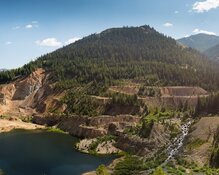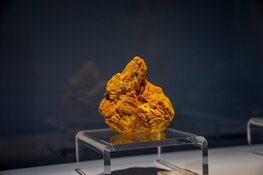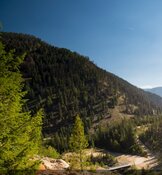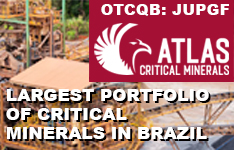The Gold Report: Paul, you're our resident mining expert on the ground in Colombia. Some noteworthy developments have occurred in the junior mining space since we last chatted in May. How is that playing out in Colombia?
Paul Harris: Activity in gold exploration is off. The main reason is the drought of financing for junior companies. A lot of companies have run out of money. Those that have money are in cash-conservation mode. Many have mothballed their plans until they can finance again. There are only a handful of companies that are doing any meaningful gold exploration work at the moment.
I recently did an analysis of the drilling sector in Colombia. Drilling reached its peak in 2012 with more than 650,000 meters (650km) drilled. It's fallen off this year to about 100km and it's going to be much less in 2014. There's about 100km of drilling that's been planned, but on hold until companies can finance.
TGR: So three or four companies are doing the lion's share of that drilling?
PH: Yes. The other thing I discovered was that the size of the typical drill program has shrunk. In the past it was 5–20km. Now companies are putting out 2km and smaller programs.
TGR: What's responsible for cooling off the sector over the last couple of years?
PH: Many explorers in Colombia came into the Middle Cauca Belt looking for gold, copper-gold and gold-copper porphyries, which if successful would more than likely be billion-dollar mine development projects. The paradigm shift in the mining industry has meant that the majors are no longer looking for those projects. They're looking for small high-grade projects and projects with low capital expenditures (capex). The change in fashion, if you like, has left many junior explorers in Colombia hanging.
There's also a government factor. There's a growing concern within the investment community over whether, having found a deposit, a company would be able to develop a mine in Colombia and about how long getting the approvals to do so would take. It's one thing to find a resource that may be economic to exploit—but getting it permitted? Modern mining is a new concept in Colombia and there are no modern gold mines. There's a question mark over how the government would do that.
TGR: Earlier this year MinMinas, Colombia's Ministry of Mining and Energy, reopened the concession application process. Tell us about that and what's happened since.
PH: The government reopened for concession applications July 2 after a two-year hiatus. It was quite successful with hundreds of applications on the first day.
Five months down the road, a lot of those companies that applied still don't know whether they're going to get their concessions or not. The government is dragging its heels on concession application approvals and that is hurting the sector, as companies have to pay their fixed costs while waiting.
TGR: Is there a discernible difference between the success of companies with a Colombian political insider, either in the management team or on the board, versus ones that don't have that luxury?
PH: No. There isn't one company that's raced ahead of the others because it had a former minister or diplomat on its board of directors, and you shouldn't expect this to be the case in a country where the rule of law is present. There are political issues to deal with in Colombia—I am not pretending that it is the simplest place to work—and while there may be bureaucracy and even corruption in some instances, I cannot see an instance where a political appointment has borne fruit. For the most part, they have been a waste of money and have filled a board seat perhaps better filled by someone that can add to the technical or financial aspects of a project.
TGR: How do investors make money in Colombian mining equities or companies with projects in Colombia?
PH: Well, Brian, I think you, as a journalist writing about exploration stocks, are in the unusual position of making more money than those that invest in exploration stocks at the moment. Seriously though, management, as always, is a key thing. There are companies that have very good management in Colombia. One of the best examples is Continental Gold Ltd. (CNL:TSX; CGOOF:OTCQX), but there are others like B2Gold Corp. (BTG:NYSE; BTO:TSX; B2G:NSX). The company has been very successful raising funds, finding projects, drilling and developing resources.
Continental is continuing with its pre-project developments, such as driving three development tunnels to better access its Buriticá deposit, and it continues to put out good drill results. It's working on a new resource estimate and a prefeasibility study for mid-2014 and is working with the mining ministry on a program to legalize about 500 informal miners in the Buriticá area. Apparently the government is very pleased with its progress and participation to date.
"Many companies have mothballed their plans until they can finance again. There are only a handful of companies that are doing any meaningful gold exploration work at the moment."
TGR: Is Continental still the best bet to be the first company to go from discovery to production in Colombia in the modern era?
PH: Yes, without a doubt.
TGR: Will Continental need to return to the market for more cash?
PH: I would imagine so. It's in a pretty good cash position, but the mine is going to cost more than it has to build.
TGR: Will the company need a partner?
PH: It shouldn't because it is planning a relatively low capex project, so financing through debt and equity should be within its capacity and ability.
TGR: B2Gold has a management team with a history of mine development. What is its key asset in Colombia?
PH: B2Gold's key asset is the Gramalote project in Antioquia. It has a resource of 4.1 million ounces (4.1 Moz). It's in a joint venture with AngloGold Ashanti Ltd. (AU:NYSE; ANG:JSE; AGG:ASX; AGD:LSE), in which B2Gold is the junior partner. AngloGold will be developing that project. It's also a junior partner with AngloGold in another property, Quebradona, and is actively looking for other gold exploration plays or properties in Colombia.
TGR: B2Gold wouldn't be there if it didn't believe that it could bring, in conjunction with a larger company, an asset to production. How do you reconcile that with what's happening elsewhere?
PH: B2Gold recognizes the gold production potential of Colombia. B2Gold was originally was the senior joint venture partner, but AngloGold wanted to take control of the two projects.
AngloGold's main project in Colombia is La Colosa, a 24 Moz project that has had a lot of political and community difficulties advancing. La Colosa is looking to be a very big mining operation. I think AngloGold wanted to take control of Gramalote because financing its development is more within its grasp and also because its development would show Colombia how it can successfully manage the development of a modern gold mining project, taking care of the community issues and protecting the environment. Successful development of Gramalote would go a long way to helping convince the people of Colombia and the government that it can successfully develop La Colosa as well.
"Take a deep breath and put your head down. Go for what your instincts tell you."
There are also a couple of exciting companies coming through in copper, interestingly enough. Atico Mining Corp. (ATY:TSX.V; ATCMF:OTCBB) recently completed its option purchase on the El Roble mine and is working on ramping up production of copper concentrate.
There's the merger underway between Cordoba Minerals Corp. (CDB:TSX.V) and Sabre Metals Inc., which is in a very interesting copper district in Cordoba. The lawyers are doing the paperwork on that and it should be finished in Q1/14. That's one to watch, assuming the merger is successful.
TGR: How long before Atico produces copper?
PH: It's producing copper concentrates. It acquired an active mine that was producing something like 20,000 tons a year. There are a lot opportunities to improve efficiency and scale, and find and exploit new resources.
TGR: Is that the path to making money in Colombia? Buy an existing mine that already has gone through the permitting process and build up confidence with the government to develop another project afterward?
PH: There isn't a great deal of existing or active mines to buy. Atico is quite rare because it's the only copper production in Colombia.
The most notable company that bought existing operations in the gold sector is Gran Colombia Gold Corp. (GCM:TSX.V). It bought the Frontino Gold Mine assets, which is now known as its Segovia operations, but it's struggling to deliver. It is a high-cost operation and as fast as the company cuts costs, the gold price has fallen faster. It's going to be a while yet before that company is in a cash-positive situation. It is now looking to raise about US$15 million (US$15M). The company has rolled back its stock twice in the last three years and has a market cap of about US$16M, so it will be interesting to see how that goes.
Colombia's very much an exploration play. The challenge is showing and educating governments, communities and politicians about modern mining, its benefits, the processes and the technologies. Everything is very new in Colombia. For example, heap leaching for gold doesn't exist. Large-scale mining for gold doesn't exist. There are conceptual hurdles to overcome.
TGR: If only a few companies are moving forward, what stage are the rest of the companies at?
PH: There are some that got in a few rounds of drilling, but not enough to get a resource out or to get to a conceptual stage, like a preliminary economic assessment (PEA). There are companies, such as Solvista Gold Corp. (SVV:TSX; SVVZF:OTCQX), that have done a lot of drilling, but have gone into hibernation to conserve cash. Trident Gold Corp. (TTG:TSX.V) is in the same boat. There are easily 10, 15 or maybe even 20 companies like that.
TGR: Talk about some of the companies that have reached the PEA stage.
PH: The most recent one, Batero Gold Corp. (BAT:TSX.V) in the Middle Cauca, put out its PEA in November. It's focused its PEA on the higher-grade, near-surface oxides. A lot of the juniors have tried to refocus on the shallow, high-grade material. Batero is next door to Seafield Resources Ltd. (SFF:TSX.V), which put out its PEA in June. Progress has been made and resources have been discovered in Colombia even though the government may be slow and bureaucratic. Now comes the difficult part of trying to get projects developed, permitted and financed.
TGR: Is there any further talk about a merger?
PH: Both companies recognize and acknowledge the value from such a merger in facilities and shared infrastructure but, from what I understand, there is no definite plan. The companies are in slightly different positions—Batero still has a healthy cash position of about $15M, while Seafield has taken on debt, so what would be the structure or the ownership? Seafield is also due to produce its prefeasibility study soon. It will be interesting to see what those numbers are.
The meltdown of Eike Batista's natural resource empire and subsequent garage sale of assets has been written about a great deal. In Colombia, he has already offloaded his coal assets and is looking to do the same with the gold assets in the Santander district that are held by AUX, Batista's gold mining unit. AUX bought up several of the exploration projects in the Santander District: Ventana Gold, Calvista Gold and Galway Resources. AUX calls the project El Gigante, "the giant" and it's on the block and up for sale.
It's estimated it has something like 20 Moz Au and AUX pulled the plug on the prefeasibility study to save cash.
TGR: When would that reach production?
PH: I can't say. AUX was planning a very large operation with aggressive production goals that would have a high capex.
TGR: Would a higher gold price be enough to save Colombia as a mining exploration play?
PH: A higher gold price is always helpful and makes uneconomic projects economic. Colombia is being very cautious about how it addresses modern mining and there is an information gap. Rightly or wrongly the financial markets view that caution as risk. Colombia is not like Chile or Peru where there have been so many mine developments. Until that first project is permitted and developed in Colombia, there's going to be that question mark hanging over the country about whether mine development is possible or not.
TGR: Is there any light at the end of this tunnel, Paul?
PH: Continental Gold is a good company with a good management team, good financing ability and good technical ability. It's got an excellent project. It's got a high-grade, low-capex project. It's trading at $3.37/share. Some would say at that price Continental Gold is a huge bargain, but it could still fall another dollar for all I know. I haven't got a crystal ball.
In addition to Continental Gold, other ones to watch include Cordoba Minerals and also Colombian Mines Corp. (CMJ:TSX.V), which has a couple of interesting early-stage projects: El Dovio and Mercedes.
TGR: What advice would you give to MinMinas, if you could?
PH: One, reduce the administrative burden of exploration. Does it really need to scrutinize concession applications for five months? The bulk of administrative scrutiny should come at the project development stage. The same thing for water use permits for drilling. These things shouldn't take six months to obtain.
Two, work hard to develop a good working relationship with the environment ministry so that the environmental permitting aspects can be better. Nobody wants environmental permits to be anything but rigorous because the environment should be protected, but there should be a process that flows.
TGR: Are there some company milestones investors can look forward to in 2014?
PH: There's going to be several. Continental Gold will put out an updated resource and prefeasibility study midyear. Seafield's prefeasibility study is due after the holidays. The merger between Cordoba Minerals and Saber could wrap up early in the year.
TGR: Some parting thoughts for investors?
PH: Take a deep breath and put your head down. Go for what your instincts tell you.
TGR: Thanks, Paul.
Paul Harris is a mining information expert with more than 12 years of experience as an analyst, journalist and researcher about the mining industry, of which he has spent nine years in Latin America including four years in Colombia and five years in Chile. Harris has written for leading industry publications and business newspapers around the world and produced reports for leading consultancy firms prior to starting Colombia Gold Letter.
Want to read more Gold Report interviews like this? Sign up for our free e-newsletter, and you'll learn when new articles have been published. To see a list of recent interviews with industry analysts and commentators, visit our Streetwise Interviews page.
DISCLOSURE:
1) Brian Sylvester conducted this interview for The Gold Report and provides services to The Gold Report as an independent contractor. He or his family own shares of the following companies mentioned in this interview: None.
2) The following companies mentioned in the interview are sponsors of The Gold Report: Continental Gold Ltd. Streetwise Reports does not accept stock in exchange for its services or as sponsorship payment.
3) Paul Harris: I or my family own shares of the following companies mentioned in this interview: Batero Gold Corp., Seafield Resources Ltd. and Continental Gold Ltd. I personally am or my family is paid by the following companies mentioned in this interview: None. My company has a financial relationship with the following companies mentioned in this interview: None. I was not paid by Streetwise Reports for participating in this interview. Comments and opinions expressed are my own comments and opinions. I had the opportunity to review the interview for accuracy as of the date of the interview and am responsible for the content of the interview.
4) Interviews are edited for clarity. Streetwise Reports does not make editorial comments or change experts' statements without their consent.
5) The interview does not constitute investment advice. Each reader is encouraged to consult with his or her individual financial professional and any action a reader takes as a result of information presented here is his or her own responsibility. By opening this page, each reader accepts and agrees to Streetwise Reports' terms of use and full legal disclaimer.
6) From time to time, Streetwise Reports LLC and its directors, officers, employees or members of their families, as well as persons interviewed for articles and interviews on the site, may have a long or short position in securities mentioned and may make purchases and/or sales of those securities in the open market or otherwise.














































